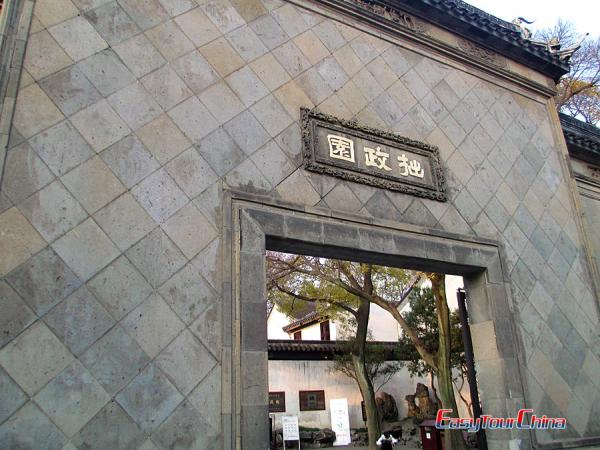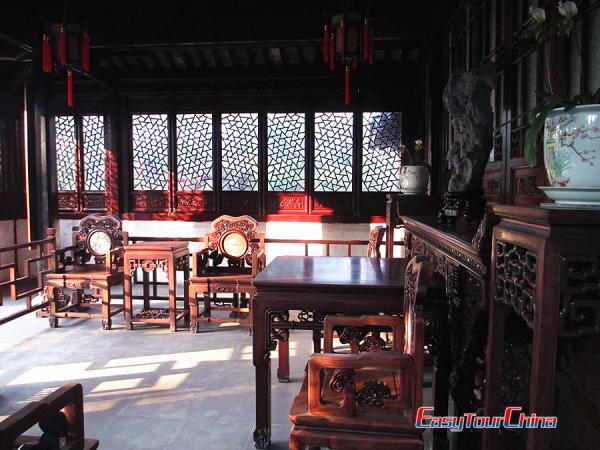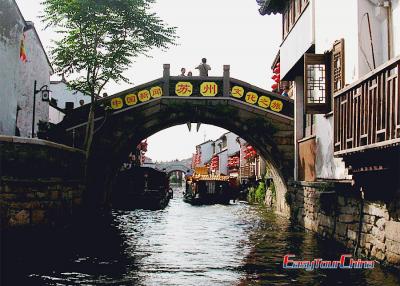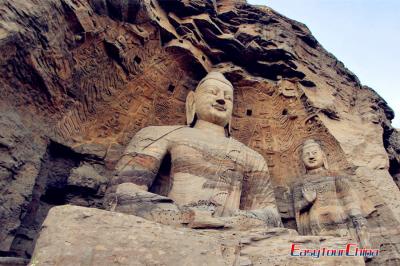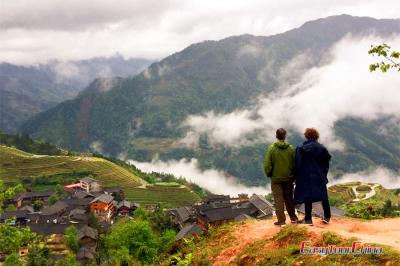Suzhou Humble Administrator's Garden
Located at 178 Dongbei Street of Suzhou, the Humble Administrator's Garden is the largest garden in the city, and it is also regarded as the 4 most famous gardens in China, together with the Summer Palace of Beijing, the Mountain Summer Resort of Chengde, and the Lingering Garden of Suzhou.
The garden's site used to be a scholar garden during the Tang Dynasty, and later became a monastery garden for the Dahong Temple during the Yuan Dynasty. In 1513, during the Ming Dynasty reign of Emperor Zhengde, an administrator named Wang Xianchen appropriated the temple and converted it into a private villa with gardens, which were constructed by digging lakes and piling the resultant earth into artificial islands. Since 1949, the garden has been undergone several renovations, and opened to the public in 1954. The present garden covers an area of 1.867 hectares (4.67 acres), and three-fifth of the garden is taken up by water.
Today's Humble Administrator's Garden is only very loosely related to its earliest version, but closely resembles its late Qing appearance, with numerous pavilions and bridges set among a maze of connected pools and islands. It consists of three major parts set about a large lake: the central part (Zhuozheng Yuan), the eastern part (once called Guitianyuanju, Dwelling Upon Return to the Countryside), and a western part (the Supplementary Garden). The house lies in the south of the garden. In total, Suzhou Humble Administrator's Garden contains 48 different buildings with 101 tablets, 40 stelae, 21 precious old trees, and over 700 Suzhou-style bonsai.
In December 1997, as a typical example of Suzhou's classical gardens, the Humble Administrator's Garden was approved by UNESCO to be included in the "World Heritage List" along with the Lingering Garden, the Master of the Nets Garden and the Huanxiu Mountain Villa. It is a must-see when travel in Suzhou.
Suzhou Humble Administrator's Garden Facts
History of Humble Administrator's Garden
Originally the residence of Tang Dynasty poet Lu Guimeng, this site became the Great Hong Temple during the Yuan Dynasty. In the fourth year of the Zhengde reign (1509 AD) of Ming Dyansty, Wang Xianchen, a Ming dynasty jinshi graduate of the Hongzhi era and censor during the Jiajing reign, retired to Suzhou after a disappointing career and purchased the site. He commissioned Wen Zhengming, a renowned painter and leading figure of the Wu School, to design the Humble Administrator's Garden.

The construction took 16 years to complete. The name “Garden of Leisurely Abode” was inspired by a poem from Pan Yue's “Ode to Leisurely Abode” during the Western Jin dynasty: "Building a house and planting trees, enjoying carefree contentment... Watering the garden and selling vegetables to provide daily sustenance... This too is the governance of a clumsy man.“ This metaphorically positioned tending the garden and growing vegetables as his own (the ”clumsy man's") governance. Shortly after the garden's completion, Wang Xianchen passed away. His son gambled away the entire garden in a single night to the Xu family.
Over 400 years, the Humble Administrator's Garden changed hands repeatedly, was once divided into three sections with distinct names, and served various purposes—private estate, government office, or scattered residential plots.
During the Chongzhen era of the Ming Dynasty (1631), Minister Wang Xinyi purchased the eastern wasteland to build the “Returning to the Fields Garden,” which later fell into disrepair. During the Daoguang era of the Qing dynasty, descendants of the Wang family still resided on the site of Humble Administrator's Garden, but it had fallen into disrepair, largely transformed into vegetable plots and grasslands. In the fourth and fifth years of the Shunzhi reign (1647–1648), Qian Qianyi (Muzhai) constructed winding chambers here to house the renowned courtesan Liu Ruzai. When Qing forces entered Suzhou, the garden was seized by the garrison commander.
It was not until the 1950s that the central, western, and eastern sections of the Humble Administrator's Garden were reunited, restoring its original name.
The Humble Administrator's Garden’s Architecture
The entire grounds of the Humble Administrator's Garden cover 62 mu (approximately 4.17 hectares; other sources cite 51,950 square meters, roughly 50,000 square meters, or 52,000 square meters), divided into four sections: East, Central, West, and Residential. The Residential section represents a typical Suzhou dwelling and is now arranged as exhibition halls for the Garden Museum.
Most of the existing structures in the garden were reconstructed during the tenth year of the Xianfeng reign (1860 AD) of Qing Dynasty when it served as the garden of the Prince Loyal's residence during the Taiping Heavenly Kingdom. By the late Qing dynasty, it had evolved into three relatively independent sections: East, Middle, and West.
Middle Garden
The central section constitutes the core scenic area and essence of the garden, covering approximately 18.5 mu (about 1.2 hectares). Its overall layout centers around a pond, with halls, pavilions and terraces all built along the water's edge. Some structures extend directly into the water, embodying the distinctive features of China’s water towns in Jiangnan.
/blog-v1272-discover-china-s-most-famous-water-towns
Judging by the names of structures within the inner garden, most are associated with lotus flowers. Wang Xianchen's fervent promotion of lotus symbolism primarily served to express his lofty, solitary character. The central area also features buildings such as the Microcosmic Pavilion, Magnolia Hall, and Mountain-Viewing Pavilion, along with the exquisitely crafted Garden-within-a-Garden—the Loquat Garden.
West Garden
Originally known as the “Supplemental Garden,” the western section spans approximately 12.5 mu. Its winding waterways and compact layout feature pavilions and towers built against hills and beside water. Due to extensive renovations, the refined and artificial artistic style prevalent after the Qianlong era dominates here. However, its water and rock arrangements remain relatively close to the central section, while its undulating, winding water corridors and streams gliding over the waves represent masterpieces of Suzhou classical garden artistry.
East Garden
Originally named “Returning to the Fields,” this eastern section of Humble Administrator's Garden derived its name from its transfer to the ownership of Minister Wang Xinyi in the fourth year of the Chongzhen reign (1631 AD). The main structures include Lanshetang Hall, Furong Pavilion, Tianquan Pavilion, and Zuiyun Peak, all relocated from other sites.
Other notable buildings in Humble Administrator's Garden include Chengguan Tower, Fucui Pavilion, Linglong Pavilion, and the Eighteen Mandala Flower Pavilion.

Designed and Laid Out around Water
The layout of the Humble Administrator's Garden is naturally sparse and dense, with water as its central feature. Centered around a pond, pavilions and terraces are built around its perimeter, connected by lattice windows and winding corridors. The garden's rocks, ancient trees, green bamboo, and flowers compose a serene and tranquil scene, representing the traditional Chinese architectural style of Ming Dynasty gardens.
/fact-v1850-chinese-architecture-complete-guide
The garden's lakes, ponds, and streams recreate the poetic landscapes of classical verse and landscape paintings within its natural setting. Flat bridges and winding paths serve as its veins, while meandering corridors fill the void. Islands and rock formations flank the garden, endowing each seemingly scattered architectural element with its own unique charm.
The entire garden architecture seems to float on the water surface. With the reflection of the wood and the support of the flowers, different artistic sentiments are generated in different realms, such as the banana corridor in summer, the plum shadow and snow moon in winter, the colorful flowers and bright sun in spring, and the red water lilies and reed marshes in autumn.
Best Things to See in Humble Administrator's Garden: Highlight Attractions
East Garden: Xiangxiang Pavilion, Hanqing Pavilion, Tianquan Pavilion, Furong Pavilion, Zhuiyun Peak
Central Garden: Xiangzhou, Xuexiang Yunwei Pavilion, Wuzhu Yujiu, Songfeng Water Pavilion, Xiaofeihong, Yuanxiang Hall, Haitang Chunwu, Tingyu Pavilion, Yulan Hall
West Garden: Hat Pavilion, Yiliang Pavilion, Thirty-Six Mandarin Ducks Pavilion (Eighteen Mandarava Flower Pavilion), Reflection Tower, Lingting Pavilion, Floating Green Pavilion, Pagoda Shadow Pavilion, With Whom to Sit Pavilion, Wave-Patterned Corridor, Garden Museum.
Elegant Inscriptions and Couplets: The Humble Administrator's Garden features forty-five elegant inscriptions, twenty-two pairs of couplets, and eighteen brick-carved door plaques. Many are the work of renowned masters, distinguished by their refined themes and exquisite calligraphy, holding significant historical and artistic value.
>> Recommended Suzhou tours:

Best Time to Visit Humble Administrator's Garden with Events
Each season in Suzhou displays the Humble Administrator's Garden in a different way.
Azalea Festival: Since 1997, the garden hosts an annual Azalea Festival each spring (March to May), showcasing nearly 200 varieties of Chinese and foreign azaleas in full bloom. Large potted azaleas and alpine azaleas are also rare sights in southern China.
Lotus Festival: The cultivation of lotus in Humble Administrator's Garden dates back nearly five centuries. Since 1996, the Lotus Festival has been held each summer and autumn (June to September), showcasing over 200 varieties of lotus and water lilies blooming in succession. The miniature lotus varieties are particularly distinctive.
Every autumn in China, Humble Administrator's Garden hosts an off-season chrysanthemum exhibition centered around chrysanthemums. During the Chinese New Year, a flower and fruit bonsai exhibition is also held.
How to Get to Humble Administrator's Garden in Suzhou
By Bus: You can take Bus No. 55, Education Park Line 55, No. 178, No. 202, No. 262, No. 309, No. 529, No. 811, No. 923, No. 925, Tourist Bus No. 1, Tourist Bus No. 2, Tourist Bus No. 5 to Suzhou Museum stop. Walk eastward for about 500 meters to reach Humble Administrator's Garden.
By subway:
1. Take the Suzhou Metro Line 4 to Beishitai Station and get off. Walk eastward for about 1 kilometer and you will arrive.
2. Take the Suzhou Metro Line 6 to Suzhou Botanical Garden SuBo Station and walk about 100 meters to reach there.
Plan Your Humble Administrator's Garden Tour with Easy Tour China
For travelers who are planing Suzhou tours and wish to visit the Humble Administrator's Garden, see our customizable classic China tour packages:
Or contact us to tailor make a tour based on your specific requirements.
